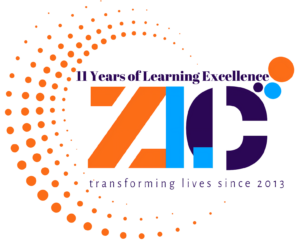As they say, first impressions are last impressions. The employee’s journey with a company begins with the employee on-boarding day. A hasty, impersonal on-boarding can create a negative bias in the new hire’s mind and may lead to higher rates of disengagement and employee turnover.
Unfortunately, most organizations do not have a structured on-boarding process.
According to a 2017 study conducted by CareerBuilder, found out that in most organizations do not prioritize effective on-boarding of new employees. In most cases, the focus of on-boarding is orientation and includes a generic tour of the office and a display of corporate AV videos.
Not Just another Getting To Know Each Other Event
Although at the outset on-boarding is an introductory event, neglecting to make it engaging and memorable can have far-reaching consequences.
- 69% of employees are willing to stick with a company for more than 3 years if they enjoy the on-boarding experience according to a 2022 report by Techjury.
- Poor on-boarding experience breeds disengagement and disloyalty in the workplace. For example, a 2018 survey conducted by HR Dive revealed that no less than 28% of employees left their companies within 90 days of joining due to unsatisfactory on-boarding experience.
- When it comes to on-boarding customer service executives, effective on-boarding of new employees can be a decisive factor whether you have a happy customers. Yes, you read that right! A positive on-boarding experience can go on to create a workforce that is personally invested in the organization’s growth – this includes the growth of positive client reviews.
Common Mistakes to Watch Out For When On-boarding Newbies:
A poor on-boarding experience can leave new workers bewildered and dissatisfied.
But what exactly constitutes a ‘bad on-boarding experience’?
While there is no official definition of what is meant by a bad on-boarding event, you can watch for the following red flags:
Delayed On-boarding
A delay in on-boarding event can make new hires feel as if they are not a valued member of your team.
Lack of pre-boarding
The pre-boarding phase consists of having all the essential paperwork ready so that no time is wasted in gathering them once the employee arrives.
Poor preparation
In some companies’ especially small-scale businesses and start-ups, it is not uncommon to have a casual rather lackadaisical approach towards employee on-boarding. But no matter how relaxed the your workplace and culture are, it is a big mistake to not take the on-boarding process seriously.
Even the most creative employee who would otherwise thrive in chaos would want an engaging on boarding event as they would want to feel welcomed and a vital part of your team.
Information Overload
In some organizations HR department have an obligation to keep the on-boarding process as brief as possible. So the employees are overburdened with a huge load of information. In most cases, newbies feel overwhelmed.
Unclear Goals/Expectations
Although the on-boarding process should prioritize helping the employee ease their way into the organization, one of the main purposes of on-boarding officers is to give employees an insight into their daily activities and what will be expected of them.
Not taking Cultural and other Differences into Consideration
For some employees, especially those who belong to marginalized communities feeling safe and included is a must. If the on-boarding experience is not inclusive, and they feel left out, these employees will struggle to align themselves with your organization.
How to Craft a Memorable On-boarding Experience?
If you want to create an entertaining and effective on-boarding of new employees, one that they will look back with fondness you can implement the following suggestions:
- Email basic details like dress codes, parking spaces, and mandatory documents they must carry like PAN card, Aadhar card, and Voter ID on the day before joining.
- Ensure you have a fully equipped workplace, and all the necessary details like passwords, ID badges, uniforms, and email accounts are kept ready before the employees join. One of the main goals of effective on-boarding of new employees is that your organization should come across as competent and thoughtful.
- If your company is mostly remote, set up a new Telegram channel or WhatsApp group for new hires. Introduce them to the marketing heads so that they can be briefed on what will be expected of them in the next few weeks.
- Send new employees ‘Zoom kits’ with a webcam and handset, screen background complete with the company logo.
- Host meetings like virtual ice cream testing. Or conduct remote brainstorming where new hires will be invited to give their insights on marketing, business strategies, etc.
- Share the KPIs (Key Performance Indicators) the new employees have to meet in the first 30 days, 90 days, etc.
- As we have mentioned before, information overload can become a major hurdle to effective employee on boarding. So create a PDF that will contain vital information /address questions like – details of payday, PTO and holidays the employee is entitled to receive, work-from-home policy, etc.
- If aiming for an effective employee on boarding experience on-site, be ready with goodies like T-Shirts, cups, a pen/diary, and cookies with the company logo and employee’s name printed on them.
Ask preferred names and pronouns.
- Inquire about dietary preferences. Some employees will refrain from certain food items due to religious/cultural/ethical reasons.
- Try to arrange workspaces the new hires will be most comfortable working. If an employee uses a wheelchair then you can arrange height adjustable desks.

